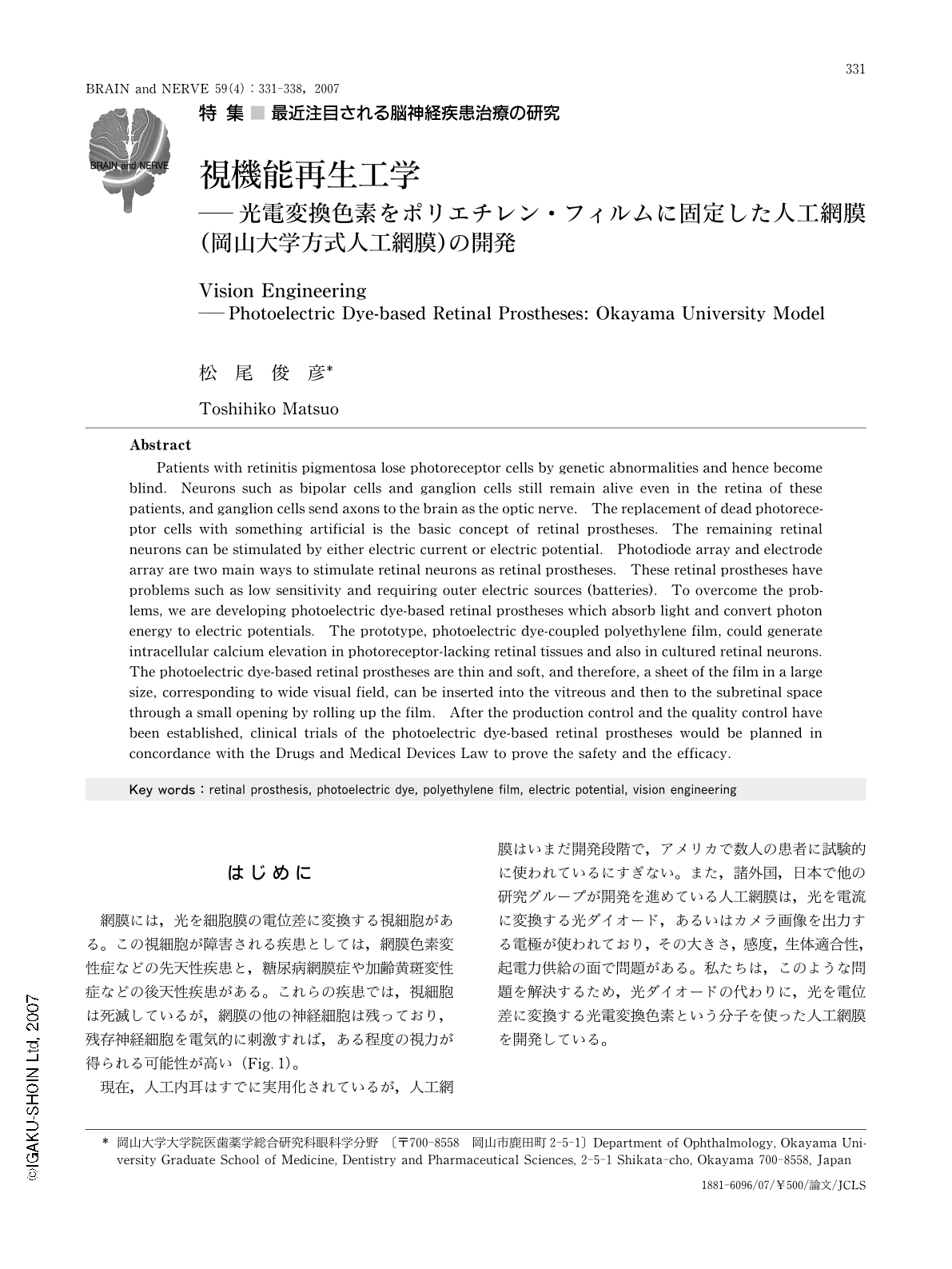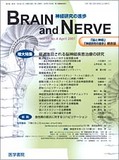Japanese
English
- 有料閲覧
- Abstract 文献概要
- 1ページ目 Look Inside
- 参考文献 Reference
はじめに
網膜には,光を細胞膜の電位差に変換する視細胞がある。この視細胞が障害される疾患としては,網膜色素変性症などの先天性疾患と,糖尿病網膜症や加齢黄斑変性症などの後天性疾患がある。これらの疾患では,視細胞は死滅しているが,網膜の他の神経細胞は残っており,残存神経細胞を電気的に刺激すれば,ある程度の視力が得られる可能性が高い(Fig.1)。
現在,人工内耳はすでに実用化されているが,人工網膜はいまだ開発段階で,アメリカで数人の患者に試験的に使われているにすぎない。また,諸外国,日本で他の研究グループが開発を進めている人工網膜は,光を電流に変換する光ダイオード,あるいはカメラ画像を出力する電極が使われており,その大きさ,感度,生体適合性,起電力供給の面で問題がある。私たちは,このような問題を解決するため,光ダイオードの代わりに,光を電位差に変換する光電変換色素という分子を使った人工網膜を開発している。
Abstract
Patients with retinitis pigmentosa lose photoreceptor cells by genetic abnormalities and hence become blind. Neurons such as bipolar cells and ganglion cells still remain alive even in the retina of these patients, and ganglion cells send axons to the brain as the optic nerve. The replacement of dead photoreceptor cells with something artificial is the basic concept of retinal prostheses. The remaining retinal neurons can be stimulated by either electric current or electric potential. Photodiode array and electrode array are two main ways to stimulate retinal neurons as retinal prostheses. These retinal prostheses have problems such as low sensitivity and requiring outer electric sources (batteries). To overcome the problems, we are developing photoelectric dye-based retinal prostheses which absorb light and convert photon energy to electric potentials. The prototype, photoelectric dye-coupled polyethylene film, could generate intracellular calcium elevation in photoreceptor-lacking retinal tissues and also in cultured retinal neurons. The photoelectric dye-based retinal prostheses are thin and soft, and therefore, a sheet of the film in a large size, corresponding to wide visual field, can be inserted into the vitreous and then to the subretinal space through a small opening by rolling up the film. After the production control and the quality control have been established, clinical trials of the photoelectric dye-based retinal prostheses would be planned in concordance with the Drugs and Medical Devices Law to prove the safety and the efficacy.

Copyright © 2007, Igaku-Shoin Ltd. All rights reserved.


